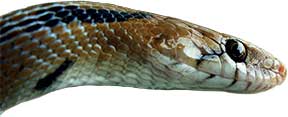Geetha Iyer
 Snakes evoke both fear and fascination. These emotions are perhaps responsible for the human imagination to come up with narrations that are both true and false. Some of these false narratives, unintentional, have gone on to become legends and myths leading to ritualistic practices; practices which are ridiculous if one comes to know a little more about the lifestyle of snakes.
Snakes evoke both fear and fascination. These emotions are perhaps responsible for the human imagination to come up with narrations that are both true and false. Some of these false narratives, unintentional, have gone on to become legends and myths leading to ritualistic practices; practices which are ridiculous if one comes to know a little more about the lifestyle of snakes.
There are several snakes that share our habitat. Are all of them to be feared? Not necessarily; they should be treated with respect but not fear. Broadly speaking snakes may be classified as venomous and non-venomous. This classification is based on whether the snake is capable of producing the chemical secretion called venom. Snakes use venom for capturing prey but the venom can kill humans as well. Death due to snake bite from the ‘big four’ venomous snakes, mostly in rural areas is the basis for fear of snakes. Rightly so, but then it is also important to remember that snakes do not seek out humans and bite them to kill. Most bites are accidental, occurring due to carelessness on the part of humans and self defense on the part of snakes. Of the four venomous snakes that account for fatal conditions in humans, Cobra and Krait bites are more common than those of Russell’s and Saw-scaled viper. This is because the Cobra and Krait seek food that are rats and other reptiles which may be found in our homes, gardens, and agricultural fields. Hence their encounter with humans is more likely, for instance, coming in contact with farmers during the harvesting season, as they search for rodents. Humans rarely come across vipers because they live amongst rocks and bushes away from human habitat. But this article focuses on non-venomous snakes that do not harm us and need not be mistakenly killed.
Snake encounters
Snakes, like all other creatures, seek food and shelter. If they visit our homes or our immediate surroundings, then it is a sign that we have either food or shelter that suits their needs. Uncut vegetation, piled up debris, wood or other materials, cracks or holes in a non-concrete roof are places that rats, lizards, etc., frequent, in turn attracting snakes. Snakes do not actively seek humans, and are probably as wary of humans as we are of them. In rural households, wood piles in the kitchen, garden sheds, and open drains are places where snakes may be seen. Some attention to ensuring that we don’t provide the comfort that a snake seeks is an important step to minimizing encounters with them.
The author is a consultant for science and environment education. She can be reached at scopsowl@gmail.com.
